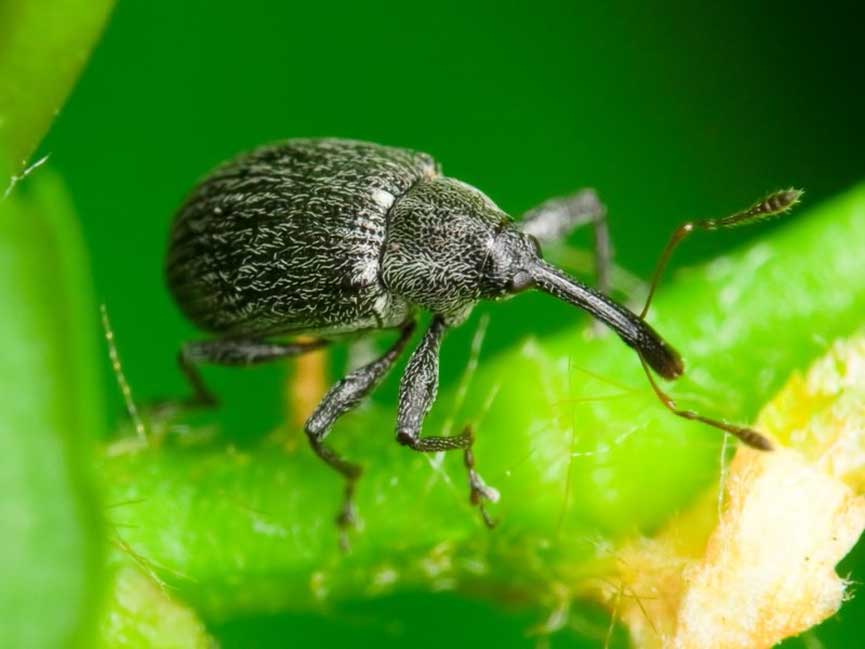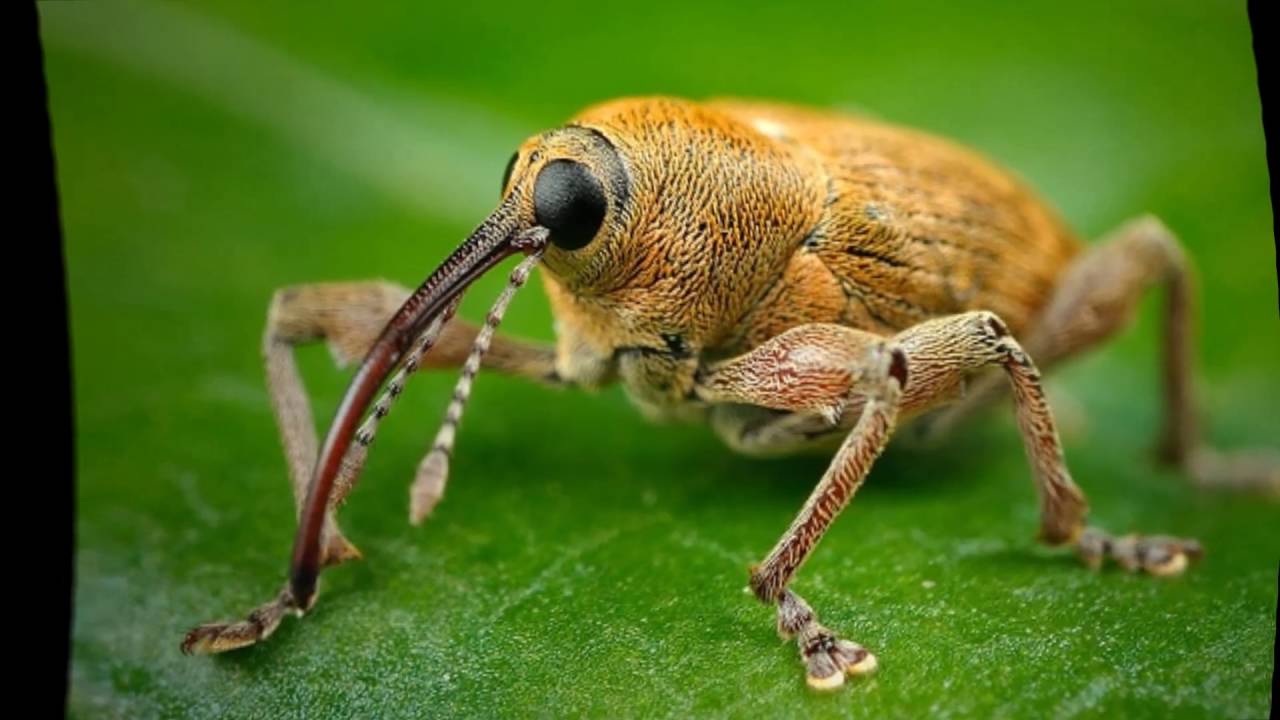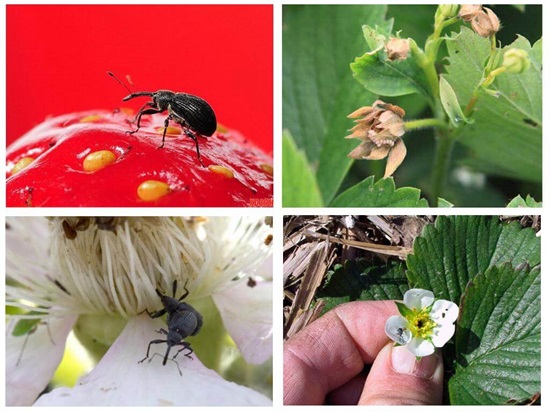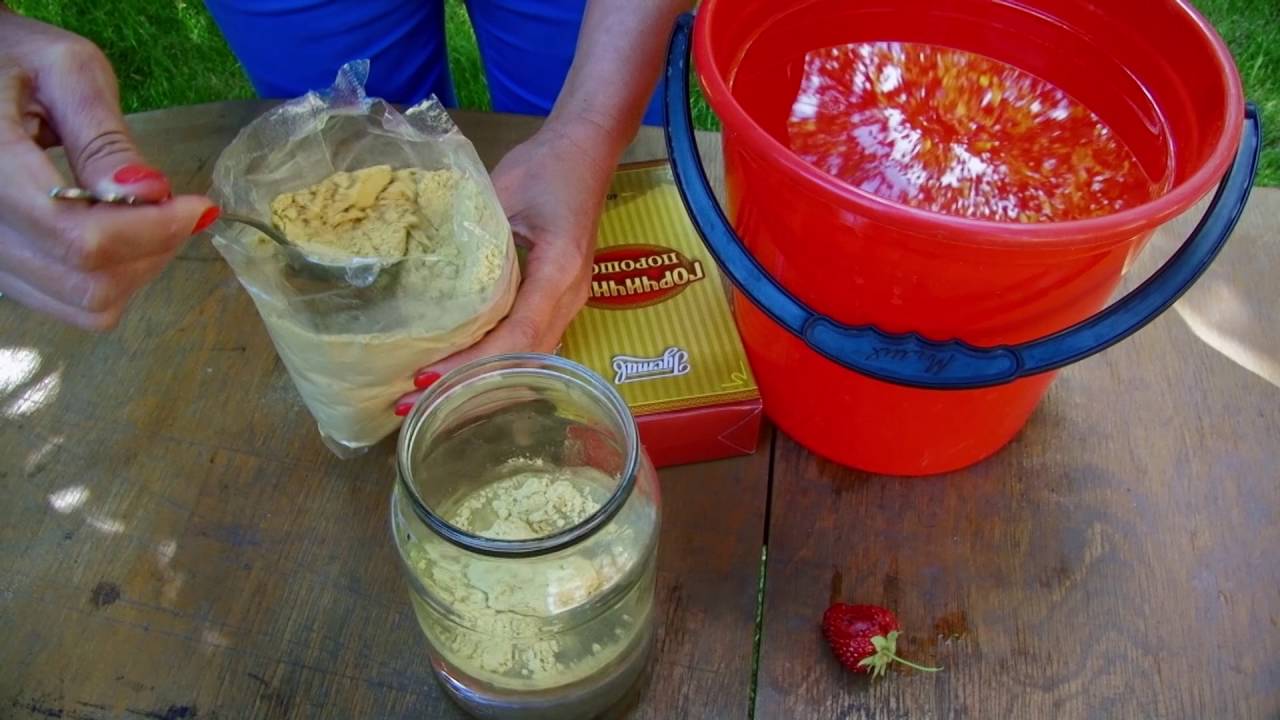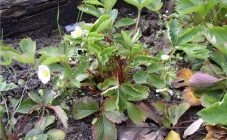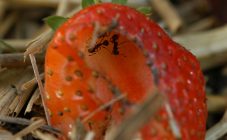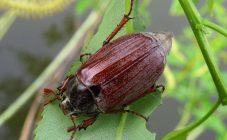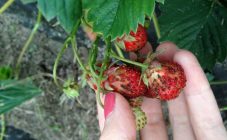Content:
A small long-nosed bug can cause considerable damage to strawberry beds. Because of it, the berry harvest can be reduced by at least 60%. Weevils pose the greatest danger during the budding period. In spring, flower stalks rise above the leaves, attracting the attention of pests.
Weevil on strawberries how to deal with it? There are many effective ways. It is very important not to waste time, but to start breeding harmful insects immediately upon detection.
Description of the pest
Weevils (elephants or skosari) are beetles of the Curculionidae family. Insects can be found in different parts of the world, many of them are found in tropical and subtropical forests. In total, there are more than 50 thousand of their varieties, in Russia - more than 5 thousand. They differ among themselves in color, shape and size.
A distinctive feature in insects is the presence of a rostrum, that is, an elongated front part of the head, like an elephant's trunk. Russian beetles are pearl gray, brown or black, which makes them invisible on plants.
The insect's diet includes raspberries, strawberries, strawberries, apricots. He eats not only fruits, but also stems, leaves, buds. The gluttonous bug can also covet cereals that are kept at home, indoor or garden flowers, wood, mushrooms, aquatic plants or fallen leaves.
Favorite delicacy is buds. Here insects prefer to lay their eggs. If there are no flowers, then use other tissues (stems, roots, fruits, etc.). The female elephant pierces the surface with the help of a long proboscis, laying eggs inside. There can be about a hundred of the latter in one plant.
After 7 days, the larva appears. It grows like an incubator. As it grows, it completely eats up the plant from the inside. A month later, she calmly wraps herself in a cocoon there. After another 10 days, an adult beetle appears.
Varieties
The following types of bevels are most common:
- Raspberry and strawberry. The elephant has the shape of an oval, the color of the body and proboscis is black. Covered with dense light gray bristles. It grows in length up to 3 mm. He prefers to settle in the European part of the country, as well as in Altai and Siberia. It feeds on blackberries, raspberries, strawberries, rose hips, strawberries and other berries. Leads an active life from May to June. Winters in the soil.
- Small black. The body of this individual looks like an elongated oval. The trunk is short and widened at the end. Color - black or brown, but with a shiny tint. The body is decorated with chiseled grooves and sparse gray bristles. The length of the elephant is 5 mm. He lives only in the European part. The diet consists of berries, beets, alfalfa and conifers. An active beetle occurs only in the dark.
- Burdock or rough. The body is oval in shape, its color is light brown. There are also rare whitish setae. The insect is called rough because of the presence of yellow scales and raised bumps on its body. The proboscis of this beetle is short; on the contrary, it is short and widens towards the base. The length of the insect is 7 mm. It is widespread everywhere. Prefers to eat kidneys, tops of berries or vegetables. The larvae eat mainly the roots. Most active during cloudy weather.He has good acting skills: if you touch him, he pretends to be dead.
- Furrowed. The elephant is colored brown or gray-black with yellow streaks. There are punctate grooves on the body. The proboscis is short and widened. Length - 10 mm. He prefers to live in "warm" places: in a greenhouse, a greenhouse or in nurseries. It can eat not only berries, but also industrial crops. He does not disdain decorative flowers. The beetle has a special love for the vine. Adult insects eat buds, leaves and fruits, larvae destroy roots.
- Alfalfa. The largest beetle on this list. Its length can be up to 12 mm. The color of the body is black or brown. It is completely covered with gray scales and yellow bristles. You can find it in the Caucasus, in the European part of the country, Russia, or in southern Siberia. In addition to berries, he actively nibbles on legumes, vegetables, hops. Active - from May to July in the morning or evening.
Weevil detection methods
Unfortunately, the presence of a pest on the site is not easy to detect. By the time the gardener still identifies it, significant damage will be done to the garden: the fruits are eaten, the seedlings wilted, the buds crumbled, and so on. Therefore, it is very important to know the signs that indicate the presence of a weevil on the site.
It is almost impossible to track down the insect, it is too small in size. One weevil accidentally hitting the garden will not bring noticeable damage to plantings. It is necessary to be wary of the appearance of a colony of bugs, which will grow rapidly.
Beetles are especially active in early spring. By the beginning of August, during the late fruiting period, the pests, as a rule, go into hibernation. They can be detected by some signs that indicate traces of vital activity.
When examining strawberry bushes, pay attention to the following points:
- Are there tiny round holes on the leaves? Such holes leave bugs. Eating a green plate, they pierce it with their proboscis. If the holes are few, then don't worry. Another thing is when they have the whole sheet, you need to take urgent measures;
- Are the pedicels or stalks wilted? At first glance, it will seem that they were not completely cut off. These plant parts are a favorite pest treat. If the pedicels suffered more, then the strawberry-raspberry skosar was obviously "wielding". Plants will not bloom with him;
- Are the edges of the leaf blades gnawed? They look a little dried out. This is what the stem elephant likes to do;
- Have some bushes or rosettes withered? This sign indicates that the roots of the plants are badly damaged. As mentioned above, the larvae of the parasite feed on them.
There are always adult elephants, larvae or pupae near the affected bushes. The beetle prefers to breed, feed and winter in one place. If the colony is small, then getting rid of it will not be difficult.
Pest control methods
If a weevil is found on a strawberry during flowering, the fight against it will include a whole range of activities, which can consist of the following techniques:
- Mechanical, which involve manual collection of parasites, larvae and pupae, as well as their destruction.
- Agrotechnical. Includes certain steps:
- plowing the site before the first cold weather, which will not allow insects to overwinter;
- destruction or isolation of affected plants;
- regular cleaning of the soil from weeds;
- compliance with the rules of crop rotation.
- Biological, which involve attracting natural enemies of pests to the garden. For example, ground beetles, lacewings, birds, ants, or wasps.
- Chemical tricks. This is the use of inorganic substances, that is, insecticides, with which the soil, planting material, and so on are treated.
What measures should be taken? It depends on what kind of parasite you have to deal with. In any case, it is unlikely that it will be possible to get rid of the pest using only one method.
Chemicals
When choosing what kind of insecticides the bushes will be treated with, it should be remembered that they should not harm beneficial insects, for example, bees. Early spring is an active flowering period for other crops. Pollinating insects, including bees, have a lot of work to do. In getting rid of parasites, it is important not to get rid of these important workers.
According to gardeners, the following drugs are the safest:
- Iskra-Bio;
- Fitoverm;
- Admiral;
- Engio.
When processing plants with them, you should remember the following rules:
- It is necessary to process the plants in dry weather, otherwise the rain will wash away the active substances, and the treatment will have to be carried out again;
- There must be no wind so that the drug does not fall on adjacent landings;
- It is necessary to find out from the instructions at what air temperature the substances are most effective. With elevated or lowered thermometer marks, the drug may not work at all;
- Dilution of powders should be carried out strictly according to the instructions;
- During the spraying process, do not forget about personal protective equipment (gloves, masks, glasses).
Folk ways
Some gardeners do not want to use chemicals on their land, so they are looking for alternative methods of dealing with elephants. Advice from grandmothers will be of great help in this situation. Such methods are cheap, safe, but require repeated use. Here are some of them:
- Ordinary iodine can save the beds from bugs. You just need to dilute it in water, take 1 teaspoon of an alcohol solution for 5 liters;
- Mustard is another gardener's assistant. 100 grams of dry powder is added to a three-liter can of water;
- Diluted ammonia works well with the parasite, you need to add 2 tablespoons to a bucket of water. When preparing the solution, it is imperative to wear a protective mask on your face;
- A bar of laundry soap is grated. First, the shavings are soaked in a little water, then another 10 liters are added. This should be used to water the infected plants;
- The coniferous garlic extract has also earned the trust of experienced gardeners. First, about 100 grams of garlic are crushed, it must be soaked in water for 5 days. Then you need to purchase a coniferous extract in a pharmacy, you need 350 grams. The substance is added to the garlic tincture along with 2 tablespoons of boric acid. The resulting mixture is diluted in 10 liters of water. She needs to process the site.
If you do not get rid of pests, then their number will increase rapidly. They are unlikely to destroy the entire crop. But voracious weevils can choose other vegetable or berry crops. Therefore, it is very important to start a fight with them in a timely manner and protect the garden.

